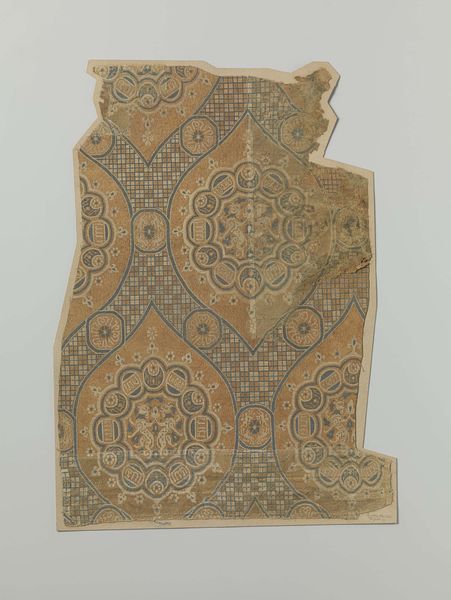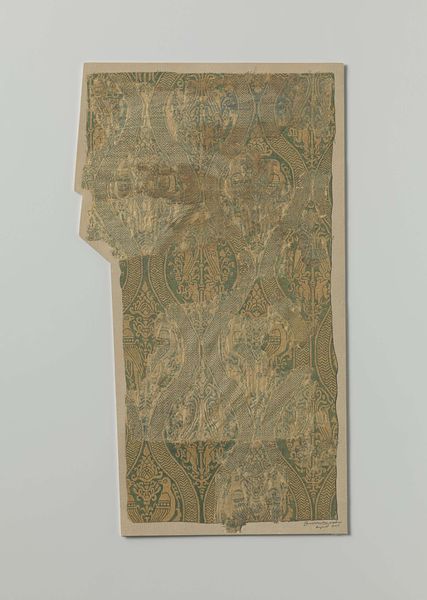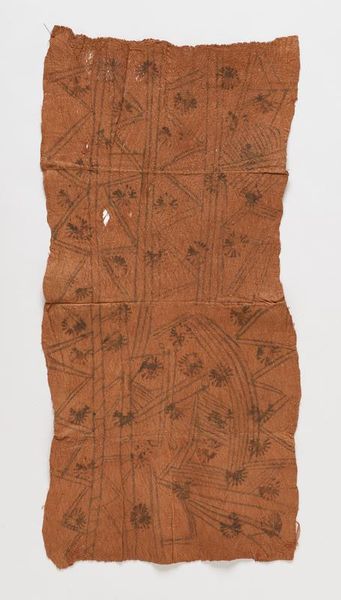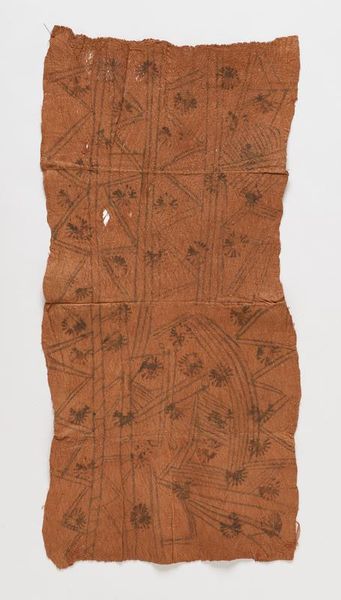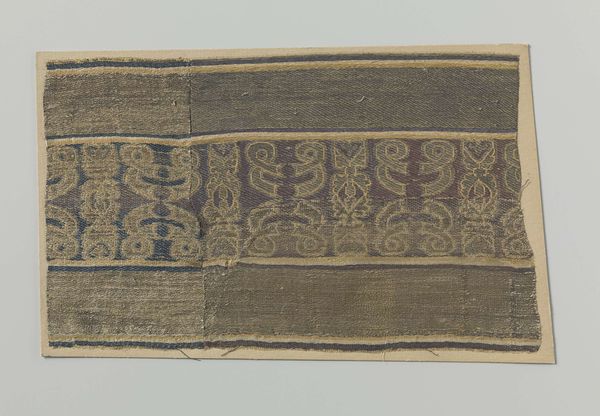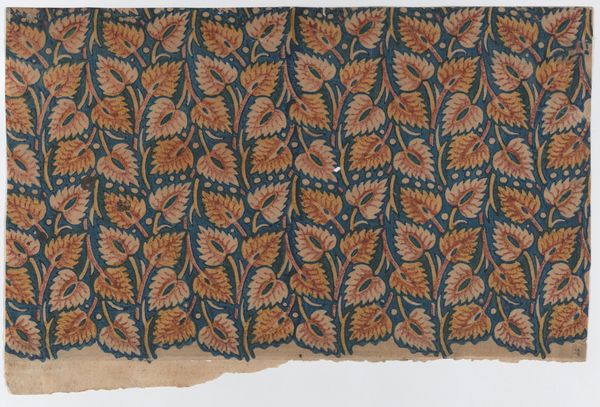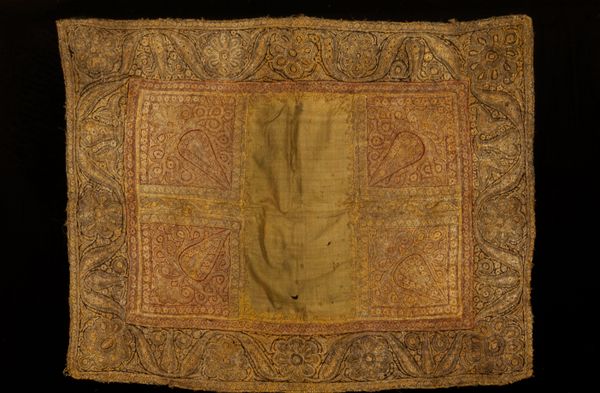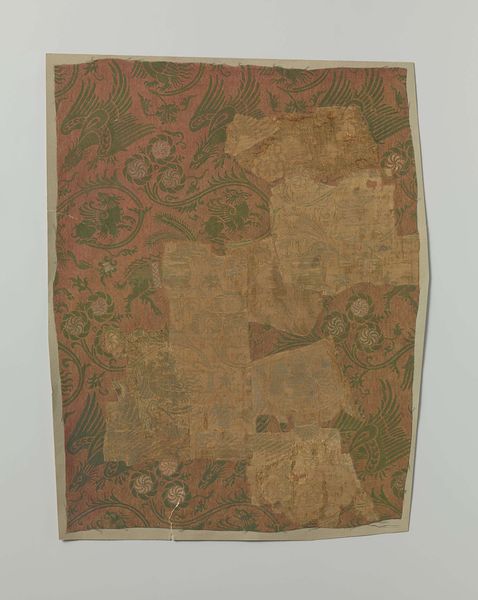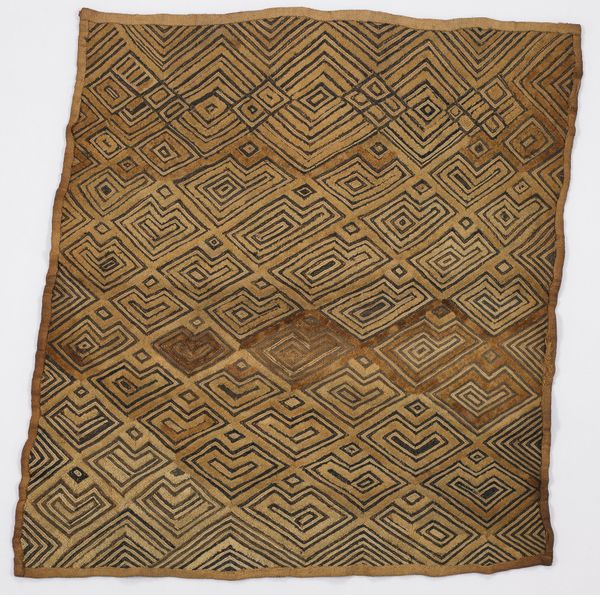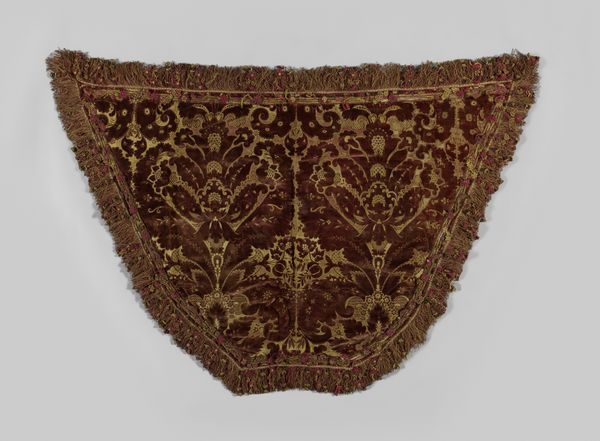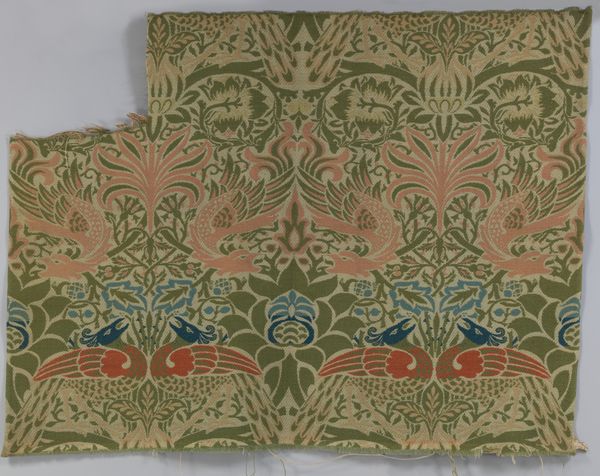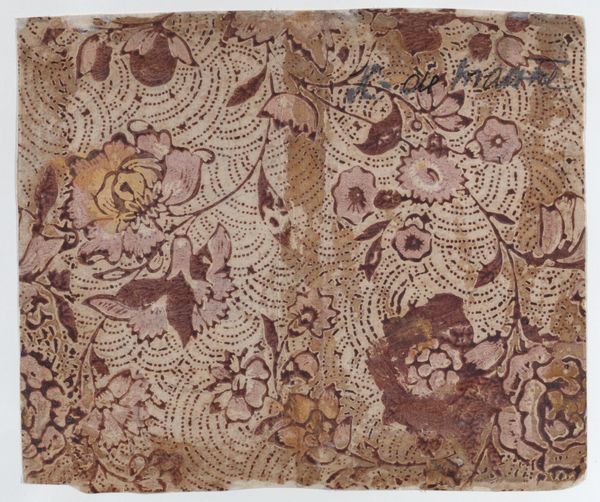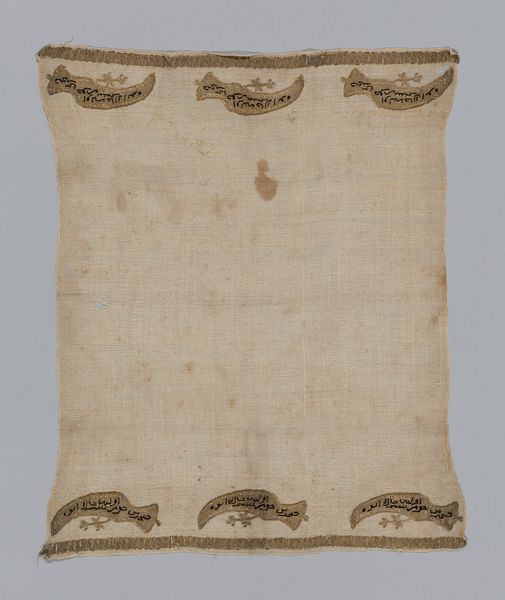
fibre-art, weaving, textile
#
natural stone pattern
#
rippled sketch texture
#
fibre-art
#
naturalistic pattern
#
weaving
#
textile
#
repetitive shape and pattern
#
organic pattern
#
geometric
#
repetition of pattern
#
regular pattern
#
pattern repetition
#
decorative-art
#
layered pattern
#
organic texture
Dimensions: height 29 cm, width 28.5 cm
Copyright: Rijks Museum: Open Domain
Curator: Immediately, I am struck by the textural complexity. You can almost feel the age in it. Editor: Indeed. Let's delve into this piece, identified as a "Fragment zijdeweefsel," a silk weave fragment, created sometime between 1200 and 1910 by an anonymous hand. Curator: The weaving itself speaks volumes. The regularity of the pattern hints at established looms and techniques. It’s an intricate design, yet executed with what looks like precision, suggesting perhaps a workshop environment, or at least a skilled artisan at work. Editor: Precisely. Note the materials. We have silk, likely traded across significant distances, indicating a web of economic and social exchanges. The pattern itself – geometric but also vaguely floral – suggests a visual vocabulary embedded within the culture of its creation. The use of weaving in itself—consider the physical demands and skill required to produce these textiles. It transcends mere decoration. Curator: Agreed. Looking closer, there's a certain dissonance. The patterns appear stylized, even constrained, yet they attempt to mimic organic forms. It is not mimetic, though; rather, symbolic. The motifs – these half-floral, half-geometric structures – possess a formal elegance and create multiple, balanced lines that converge to a stable sense of the grid. Editor: And that grid provides structure—but it also dictated the process. One has to imagine the loom itself: what limitations and possibilities did that present to the weaver? How might the act of repeating certain gestures, hour after hour, day after day, shaped the intention, shaped even the final design of the fragment? Curator: You are proposing that constraints drive the artwork itself? It is a useful theory. One cannot dismiss the visual weight of the colors as well. While time may have altered the shades, the use of a darker, faded blue/grey alongside that pale tan grounds the structure. The muted palette, with its quiet, tonal elegance is simply astonishing. Editor: Absolutely. What stories this piece could tell about production, the person at the loom, and consumption! From the materials to its execution, the whole reveals much. Curator: The way that geometric formalism meets organic expression; fascinating to me. It elevates it, perhaps to a status beyond that of “craft” alone. Editor: I agree that the work’s artistic components represent and signify not just form but all those things involved in that form’s creation, giving new voice to old methods.
Comments
No comments
Be the first to comment and join the conversation on the ultimate creative platform.
